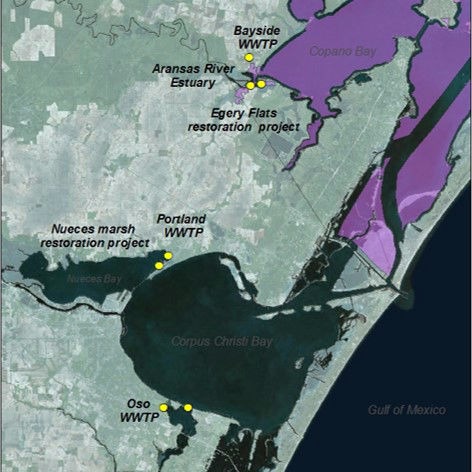

Hypoxia, classified as a dissolved oxygen concentration of < 2mg/L, has negative ecological and economic consequences and is increasing in area and frequency along the Texas coast. Hypoxia is largely attributed to nitrogen (N) inputs from wastewater treatment plants (WWTP). With the population of South Texas growing at a rapid rate, effluent input from WWTPs is expected to rise exponentially. This increase has the potential to impact the habitat and feeding grounds of important fish and bird species in Texas Coastal Bend’s bays and estuaries. Wetland systems are known to efficiently reduce excess N inputs through the denitrification process and provide a suite of beneficial ecosystem services such as greenhouse gas mitigation, N mitigation, and enhanced recreational opportunities. This Project will work to improve our understanding of the nitrogen mitigation services provided by restored wetlands in the Texas Coastal Bend.
Texas A&M University- Corpus Christi (TAMU-CC) will use nitrogen and oxygen stable isotope ratios to identify the sources of reactive N species in different water sources and investigate the denitrification, nitrification, and remineralization processes in surface sediments of marsh sites. TAMU-CC will also quantify temperature dependent seasonal denitrification rates in collected sediment cores and calculate the economic value of N mitigation services provided by specified marshes in the Texas Coastal Bend. Results from this project will monetize and increase awareness of the essential values of wetlands in improving water quality and will help justify restoration and recovery investment in the Texas Coastal Bend. TAMU-CC and Harte Research Institute will collaborate with the Coastal Bend Bays and Estuaries Program (CBBEP), and the Mission-Aransas National Estuary Research Reserve (The Reserve) to disseminate results from this study to stakeholders in the Texas Coastal Bend through both public meetings and presentations.